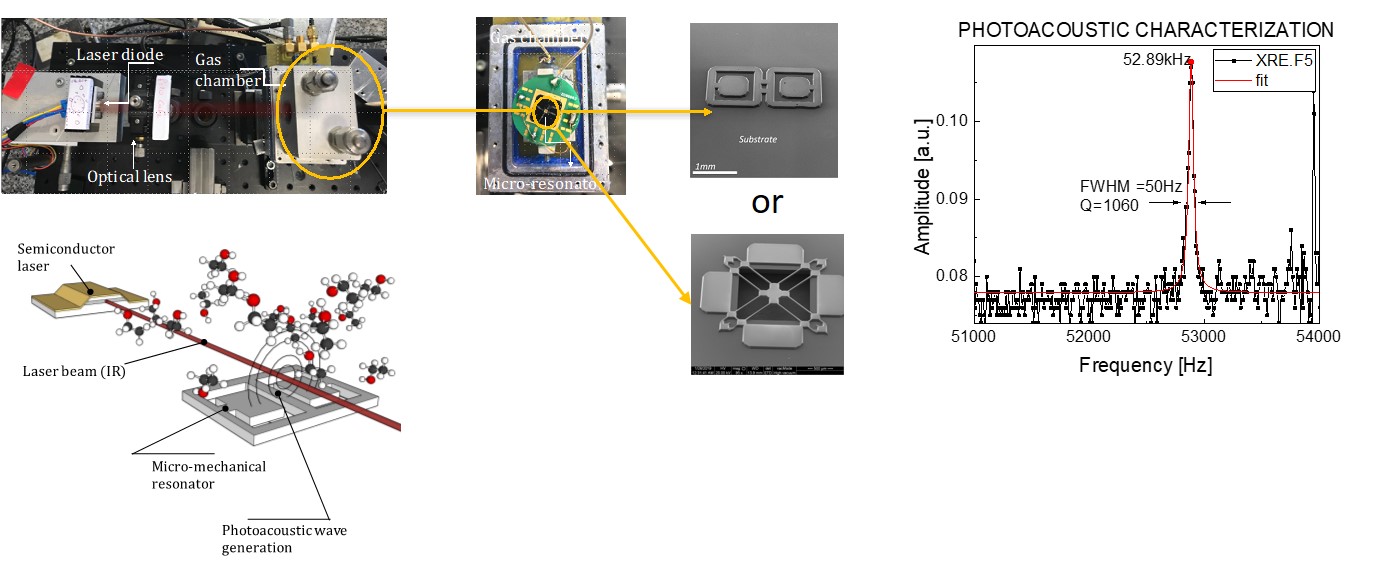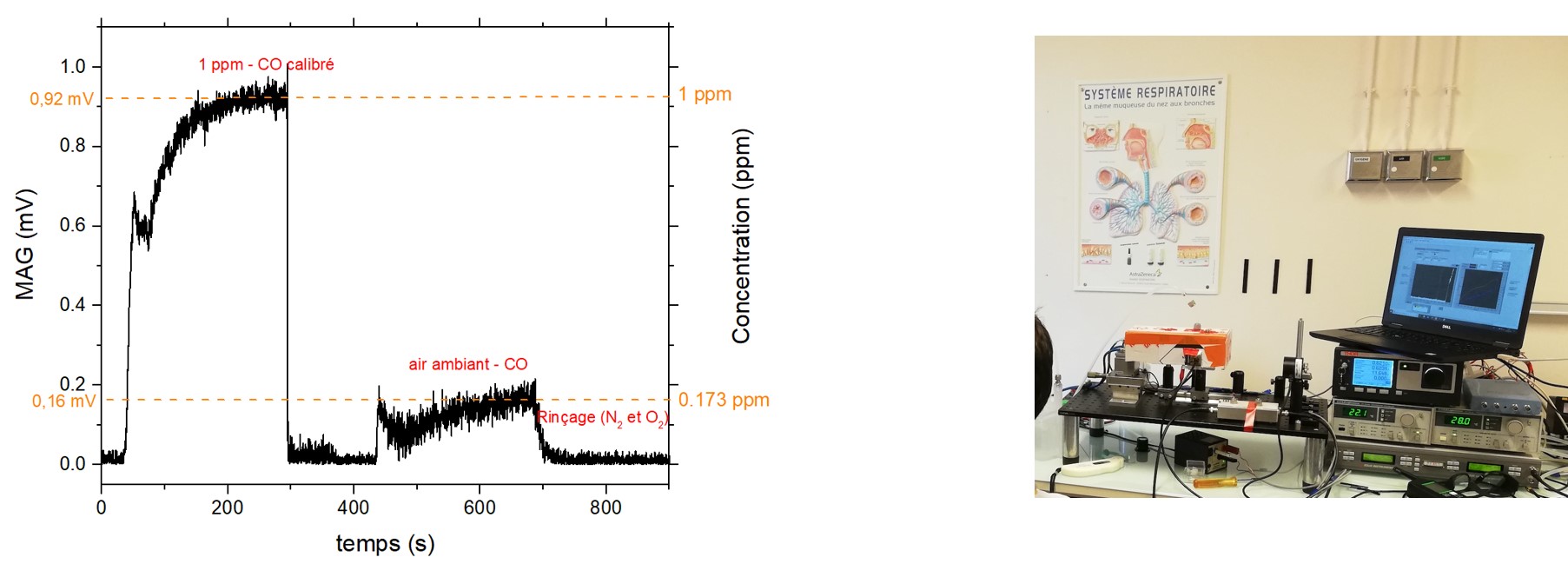Gas sensors
Gas sensors based on tunable laser absorption spectroscopy
Staff:A. Vicet, M. Bahriz, Y. Rouillard
PhD students: T. Nguyen Ba (2011-2014); K. Chamassi (2015-2018); R. Rousseau (2017-2020); W. Trzpil (2018-2021); D. Ayache (2020-2023)
Projects:NexCILAS(ANR blanc international 2011 – 2015),MIDAS(ANR P2N 2011 – 2015), CIRC (Chercheur d’avenir Région 2015),MULTIPAS(ANR 2017-2021), NOMADE (ANR JCJC 2019-2023), LedCLIPS (Pré-maturation SATT 2018-2019), COMPAS (Pré-maturation Région 2020-2022), SENSIR (Apple MUSE UM 2020-2023)
Ongoing changes in atmospheric composition due to both natural and anthropogenic influences affect not only climate and atmospheric processes but also have a negative impact on the air quality (hence human health), the hydrological cycle and ecosystems, and consequently on economic developments. Understanding and prediction of future changes in atmospheric composition requires reliable long-term estimates of sources and sinks appropriate to particular emission management scenarios with very high accuracy and precision observations of the abundance of key atmospheric species as well as their isotopes. This has been a key driving force for the development of new research infrastructures. Real timein situnetwork monitoring of changes in the composition of the atmosphere over extended periods of time requires the implementation of a robust, sensitive, selective, accurate and precise measurement infrastructure for monitoring trace concentration of atmospheric gases.
The need to have low cost, sensitive and selective sensors is therefore increasing to providein-situaccurate and reproducible measurements.
Here, we lead to the development of setups dedicated to gas sensing.
The targeted species are methane, CO, CO2 (biomass regulation, heat capacitor estimation, municipal dumps, lagoons…) for industrial or environmental applications, but also ethylene for more specific biological and agri-food applications. Our sensors have to be compact, lightweight and versatile thus favoringin situmeasurements.
We have investigated and developed several approaches based on the use of antimonide tunable semiconductor lasers: wavelength modulation spectroscopy and quartz enhanced photoacoustic spectroscopy (QEPAS) (Fig.1). Tunable lasers are distributed feedback lasers emitting in the 2 to 3.5 µm range, based on InGaAsSb/Al(In)GaAsSb quantum wells or InAs/AlSb quantum cascade. The study and development of such setups is strongly connected to the use of high quality single frequency lasers. As a consequence, the study and development of such devices is part of the setup realization. These spectroscopic techniques are extremely selective and highly sensitive.

Fig.1: (a) QEPAS setup (targeted species: CH4, CO, C2H4, NH3…) (b) Compact QEPAS sensor (targeted species: CH4/CO2)
Our QEPAS setups allowed the detection of very small amounts of methane and ethylene in the frame of several collaborations, using DFB lasers and quantum cascade lasers (Fig.2). A detection limit of 100 ppbv was obtained on methane, 60 ppbv on ethylene and 20 ppbv on CO (1s) using a laboratory QEPAS setup. We also have worked on more compact setups.

Fig.2: (a) Theoretical (blue) and experimental (red) 2f QEPAS signal while tuning the laser temperature (b) Calibration curve of the ethylene sensor
Now we have many objectives. The first one is to enhance the QEPAS setups, using multiplexed laser devices on SiGe plateform leading to very small setups dedicated to air monitoring. This work is part of the MULTIPAS ANR project. We also work on the LED-QEPAS setups and study their potential in terms of selectivity and limit of detection.

Fig.3: Capacitive photoacoustic spectroscopy with Si-based resonators (targeted species: CH4, C2H4)
Another objective is the use of specially designed capacitive micro-resonator. This MEMS, designed specifically for the gas analysis application in the frame of the CIRC project followed by NOMADE project, will lead to a more integrated approach of gas sensing. Here, a strong attention must be payed to the evaluation of damping effects decreasing the quality factor of the resonator. First results were obtained on methane and ethylene sensing (Fig.3).
A last objective is to propose developments of exhaled breath sensing, by a collaboration with Montpellier Hospital. CO sensing was first developed and clinically validated (Fig.4). In 2020, the SENSIR project, funded by MUSE (Montpellier University) is dedicated to the development of an exhaled breath sensor for cardiovascular diseases diagnosis.

Fig.4: (a) QEPAS CO sensor (b) QEPAS CO sensor for breath analysis in Montpellier CHU